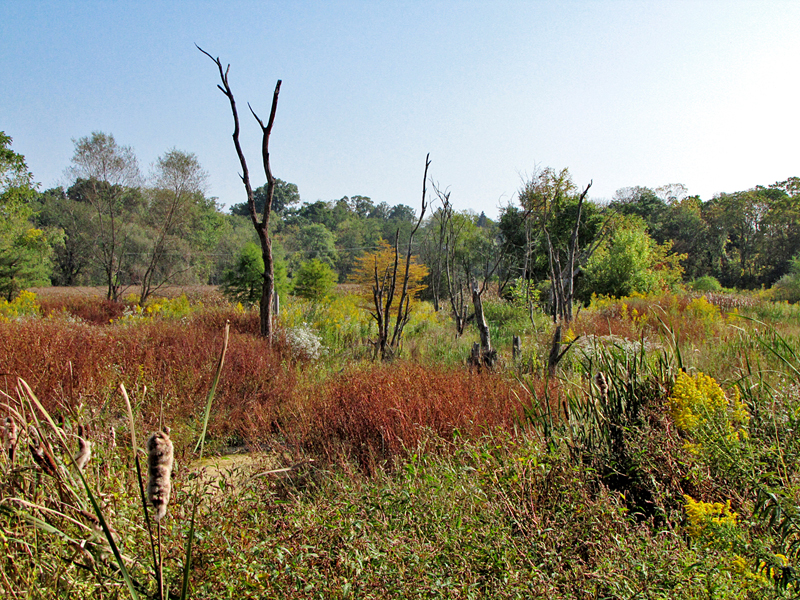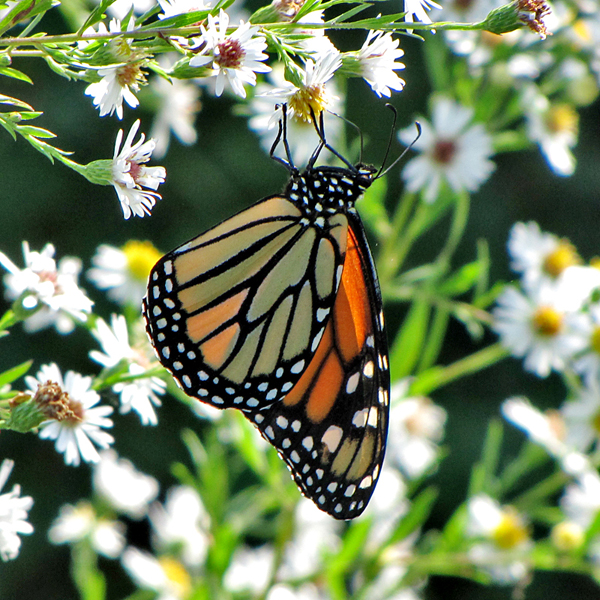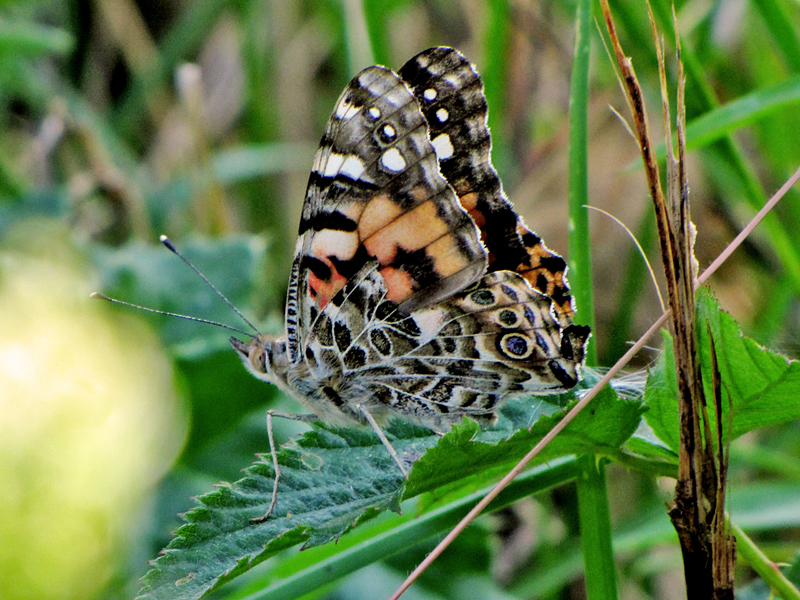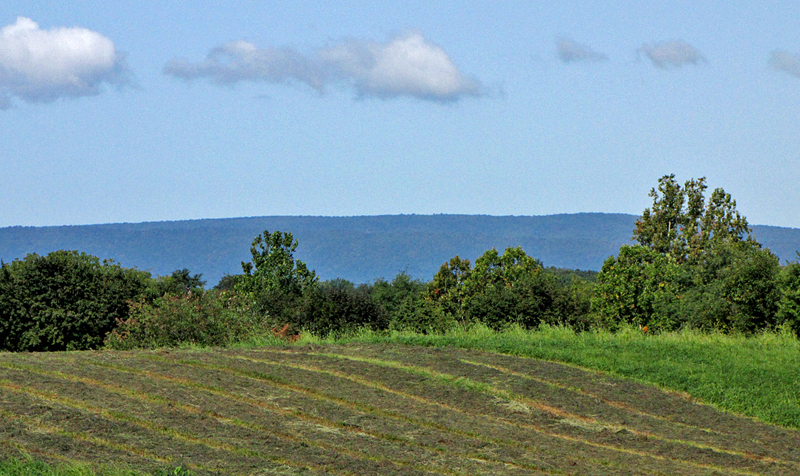I went over to the Brookside Ave. wetland this morning to see how things are over there. Like my Sunday walk, even though the Autumnal Equinox was on Friday, it's still hot and humid here, although supposedly this is the last day of it and tomorrow starts the trend back to more Autumnal weather. It's also been dry this week, so when the temps go back to being cooler we might see a speed-up of more seasonal reds, oranges, and yellows.
I wanted to check on water levels in the wetland. I recently learned that last year's extremely dry Summer wasn't the only thing to dry up the streamlets and the collection pond; apparently a dairy farm in the area sank a big, deep well that has lowered the ground water level significantly, and I wanted to see how that has effected the wetland in conjunction with this year's wetter Summer. Last year they dug some deeper channels in the pond bed to get some water to the surface, which has changed the contour of the wetland and created some interesting scenery; it's now become a series of weedy channels surrounded by more wetland vegetation. The wetland is adapting to the new conditions,
And of course I also visit the Brookside Ave. wetland because of the variety and number of the butterfly population there. It didn't disappoint, although I only managed to find two sitting still for long enough to get a decent portrait. Still, they were well worth the visit.
 |
| A view of the former pond area, which is showing signs of Fall color |
 |
| Another view of the former pond area, from a different angle |
 |
| Moth Mullein |
 |
| A Monarch butterfly feeding among the Calico Asters |
 |
| A small Two-Stripe Grasshopper trying to hide from the fearsome predator (me) |
 |
| A Painted Lady butterfly |
© 2017 by A. Roy Hilbinger






























































